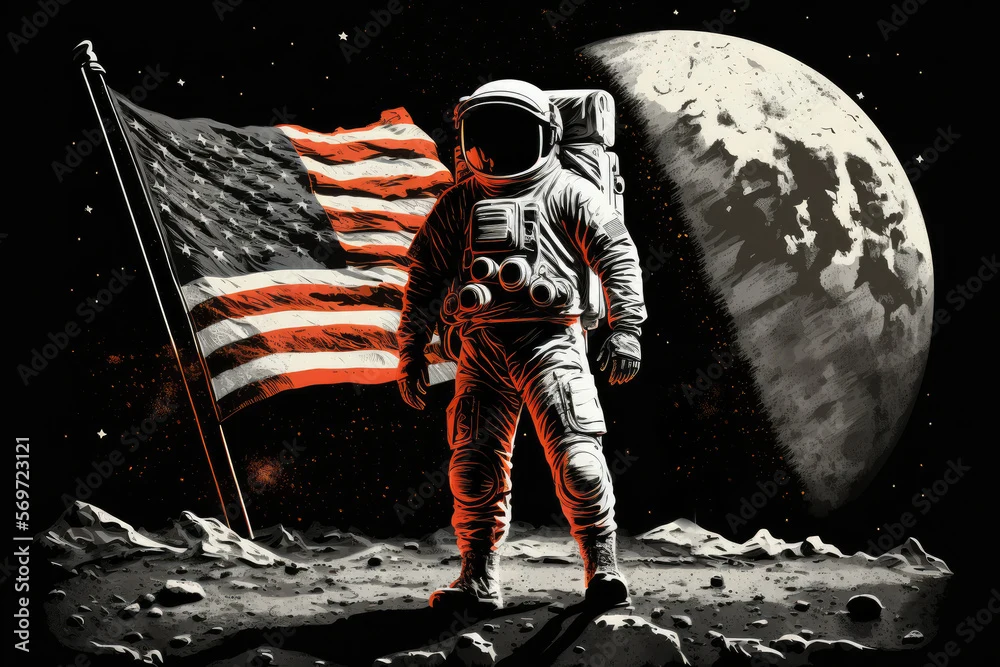Space. Man has been there for a few centuries now. It is mostly empty, and big. It is mostly the stories our forefathers told us about the skies and the mythology we built around them that makes us want to travel the stars. The pace of the industry has been slow since its inception however, with notable feats occurring barely once a decade during times of excitement and vigor. Today, we find ourselves faced with another such century, where the new explorers of the stars have set their eyes on what they wish to accomplish, and for the first time, have the funds to do so. Based on the current trajectory and pace of space exploration, let us test our sensibilities by predicting the next 100 years of space travel.
For ease of comprehension, this timeline will be divided into decades. With each decade having one noticeable space achievement. Generally, each decade even during fast paced times only has one noticeable achievement as Space travel suffers from two time investment disadvantages. 1) It is a cutting edge industry. - Every spaceship model is a unique creature, no corners can be cut, any failure is a high risk of a very public and very visually discernible disaster. A lot of what goes into the cutting edge is the first implementation of a new idea. For example - You won't just find iterative engines on spaceships, instead you might find engines on different generations running on completely different principles to increase efficiency. This is why building a spaceship or a new satellite can take up to a decade of iterations and experimentation. 2) Space travel is an infrastructure industry. A spaceship is practically a building that flies. A space station is a bunch of houses stuck together in orbit. Infrastructure construction generally takes years to reach completion.
These two factors taken together lead to space craft and new space habitat development to take years to decades at a time, in addition to the exorbitant costs of sending things to space.
Now without further ado, let us predict the future:
1.A) 2010s - development of dragon and falcon model rockets. These rockets lowered the cost of launching objects into space 10 times. While still not cheap enough to make space accessible to the middle class, it was low enough to scale up the amount of space launches that took place every year.
B) The Voyager one leaves the solar system - Voyager one became the first man made object in the world to have left the solar system in the year 2012. This marked the maximum physical extent of man's mark on the universe. With the Voyager traveling beyond the edge of the solar system, we now had confirmation that in theory we could indeed travel to all parts of the solar system, assuming willingness to make decades long journeys.
2.A) 2020s - Completion of the development of Starship rockets - The starship rocket lowered the costs of launching objects into space 10x compared to the 2010s. For the first time launching things into space became affordable to the middle class in the developed world. The completion of starship provided for a base rocket model capable of acting as transportation to planets as far as Mars for multiple trips.
2.B) The Parker Solar Probe flies through the atmosphere of the sun. It is also the fastest object ever made by humans, with top speeds of 635,266 KM per hour.
3.A) 2030s - The ISS space station is replaced. A new space station for a new century is launched. This space station has more modern accommodations, more amenities, and feels more like a hotel in space than just a research facility in space. Living in space is finally made as comfortable as living in zero Gs can be.
3.B) Lunar Gateway Project is completed - A second space station is built around the moons orbit. This is the furthest human habitat from Earth till date. It is built with plans to expand and set up a research base on the moon.
4.A) 2040s - Moon base constructed - The first moon base completes construction. Like the bases in Antarctica, these are not meant for permanent habitation, and all people who reside in these dwellings do so for a maximum of 6 months at a time. Research begins on testing Moon soil and methods of making areas of the moon more habitable. The base itself is set up in a crevice on the moon, shielding it from the worst the lunar body has to offer.
4.B) Probes and rovers sent to Mars by private enterprises - SpaceX in collaboration with NASA, launches its own home made rovers and probes towards Mars. The probes are rovers are sent primarily to search for habitable low risk zones on Mars and to speed up the process of exploring the surface of the Red planet in depth.
5.A) 2050s - New generation of spacecraft. Faster, larger, stronger, cheaper. Once again the cost of space travel is lowered ten fold. Making it accessible to the middle class in developing nation states.
5.B) New space telescope is launched. The most powerful of its time.
6.A) 2060s - First private space station is launched. First private enterprise space station is launched. It acts as the world's most expensive hotel. Booking a room costs as much as 500,000 dollars for a night. It's customer base is almost exclusively billionaires.
6.B) Mining missions to giant rocks hurling through space have begun. The tech is still in the testing phase although even the few kgs mined sell for millions due to their exotic nature.
7.A) 2070s - First Mars colony is set up along with Mars space station. They are both manned by robots preparing the planet for human colonization.
7.B) Space mining as an industry begins.
7.C) The majority of the planets in the solar system have been mapped and projects developed for setting up colonies on or around them.
8.A) 2080s- New most advanced in the world space telescope
8.B) Drop in interest in space beyond space mining and current levels of activity.
8.C) Replacement Earth Space station launched. International law sighed by 192 nation states requiring the space station to be replaced every 3 decades.
9.A) 2090s - Stagnant decade. Mars travel time reduced to 100 days.
9.B) Some people have moved into the Mars base on a temporary basis.
10.A) 2100s - Venus space station deployed.
10.B) Conglomerates fighting over mining and colonization rights on Mars.
10.C) The century of private space colonization is underway.
11.A) 2110s - The moon colony now has 10,000 people living there at a time. No permanent resident so far.
11.B) Life is found in Europe ( Leaving the spelling error because it's funny ), under the ice surface.
11.C) Physicists are beginning to reach the consensus that the model of the universe that best explains its current shape would be one where alien galactic empires have risen and fallen. Explaining the unnaturally dense areas of missing stars and areas completely empty of exotic materials.
12.A) 2120s - There is a research station around every single planet in the solar system. It now takes only three years for a probe to travel till the edge of the solar system.
12.B) First probe launched with the mission to reach Alpha Centauri and send back footage.
13.A) 2130s - Probe reached Alpha Centauri. Interest in space gains momentum among the public once again.
13.B) Half of the moons resources have been mined and sent back to Earth. Pressure on governments to pass laws regarding responsible use and extraction of space resources.
13.C) 50,000 people living on the moon at any single point in time. No permanent residents. Mars population has gone up to 2,000 people.
In conclusion:
Space exploration and colonization even at its fastest is going to be glacially slow compared to how fast the rest of the world and its technologies move. We will probably have at most 50-60,000 people living off planet at a time at most even after a hundred years of further research and development at a fast rate. On the brighter side consensus in the scientific community will be reached that intelligence life definitely exists beyond Earth, and non-human probes will be 10s to 100s of times faster than their travel speeds today. Space mining will be a very big and profitable industry.
@Aevann effortpost


















Jump in the discussion.
No email address required.
Actual timeline
Jump in the discussion.
No email address required.
This is the second dumbest thing I have read this month.
Jump in the discussion.
No email address required.
More options
Context
More options
Context